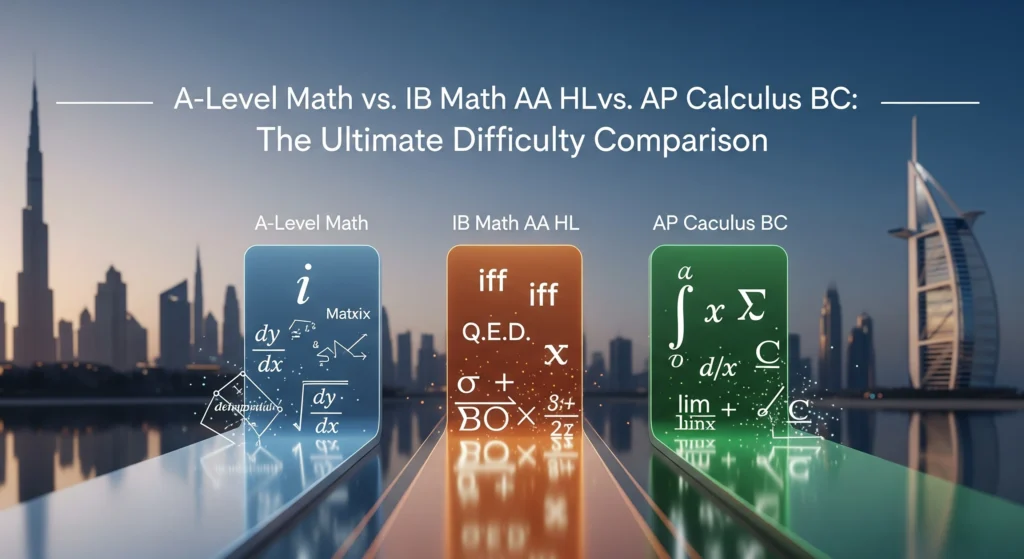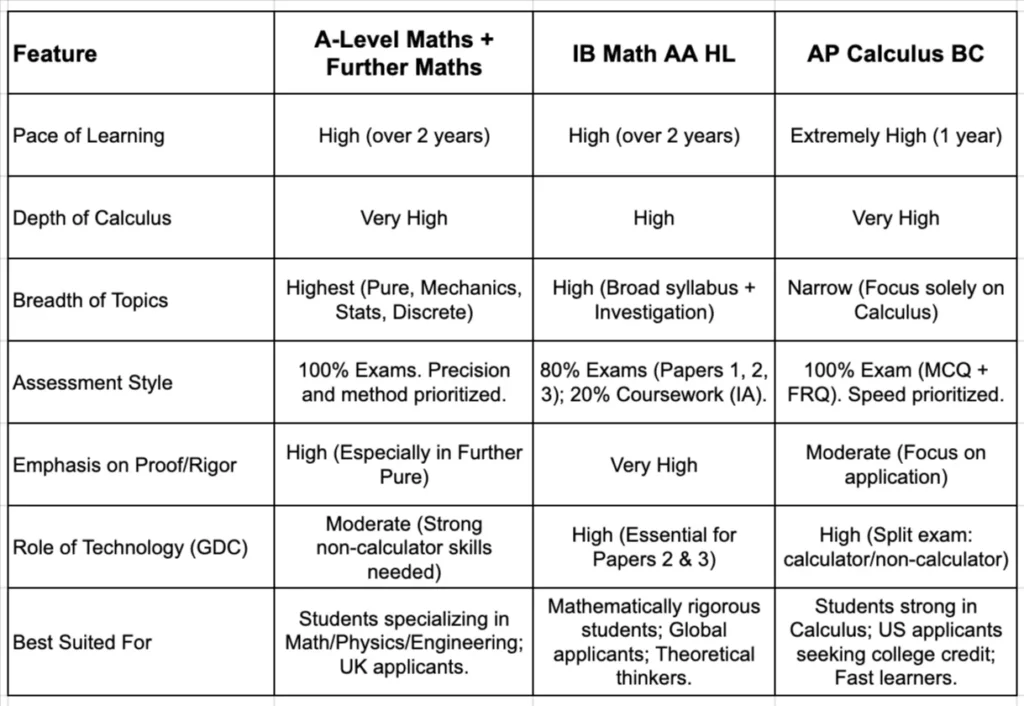A-Level Math vs. IB Math AA HL vs. AP Calculus BC: The Ultimate Difficulty Comparison (Dubai Context)
For ambitious high school students in Dubai aiming for elite universities in STEM or Economics, the choice of mathematics curriculum is arguably the most critical academic decision they will make. Dubai’s top international schools primarily offer three rigorous pathways: the British A-Levels, the International Baccalaureate Diploma Programme (IB DP), and the American Advanced Placement (AP) system.
This prevalence leads to a common dilemma: Which pathway is the most challenging, and which provides the best preparation for university?
As educators with extensive experience preparing students across all three systems in the UAE, we understand that “difficulty” is nuanced. It depends on a combination of conceptual depth, the pace of learning, the level of abstractness, and the pressure of assessment.

